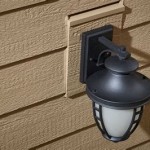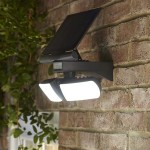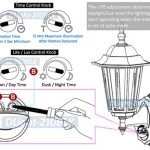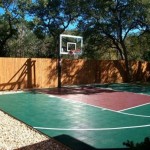```html
Restoring Cast Iron Outdoor Furniture
Cast iron outdoor furniture possesses a timeless charm and enduring quality. However, exposure to the elements often leads to rust, paint degradation, and general deterioration. Restoring these pieces, while requiring effort, can bring them back to their former glory and extend their lifespan significantly. This article provides a comprehensive guide to restoring cast iron outdoor furniture, covering the necessary steps, tools, and materials.
Initial Assessment and Preparation
Before embarking on the restoration process, a thorough assessment of the furniture's condition is crucial. This involves identifying the extent of rust, the condition of the existing paint (if any), and any structural damage. Examine the joints, legs, and any decorative elements for cracks or breaks. The severity of the rust and the complexity of the design will dictate the time and effort required for restoration.
The initial preparation phase includes cleaning the furniture to remove loose dirt, debris, and flaking paint. A stiff-bristled brush and a solution of mild soap and water are typically sufficient for this purpose. Pressure washing can be used with caution, as excessive pressure can damage the cast iron, especially if it is already weakened by rust. Avoid using harsh chemicals or abrasive cleaners at this stage, as they can potentially harm the underlying metal.
After cleaning, allow the furniture to dry completely. This is essential to prevent further rust formation underneath any remaining paint or rust layers. A dry environment is also important for the subsequent steps, such as rust removal and priming.
Rust Removal Techniques
Rust removal is arguably the most crucial and time-consuming aspect of restoring cast iron furniture. Several methods are available, each with its advantages and disadvantages. The choice of method depends on the severity of the rust and the availability of tools and resources.
Mechanical Removal: This involves physically removing the rust using tools such as wire brushes, sandpaper, and abrasive pads. Wire brushes, available in various sizes and shapes, are effective for removing loose rust and scale. Sandpaper, ranging from coarse to fine grits, is used to smooth the surface and prepare it for priming. Abrasive pads, such as Scotch-Brite pads, are useful for removing rust from intricate designs and hard-to-reach areas. Power tools, such as angle grinders with wire brush attachments or orbital sanders, can significantly speed up the process, but require careful handling to avoid damaging the cast iron. When using power tools, always wear safety glasses and a dust mask to protect yourself from flying debris and particles. This technique can be labor intensive but offers precise control over the rust removal process.
Chemical Removal: Chemical rust removers offer an alternative to mechanical methods. These products contain acids or chelating agents that dissolve or convert the rust into a more stable compound. Follow the manufacturer's instructions carefully when using chemical rust removers, as they can be corrosive and pose health risks. Always wear gloves and eye protection, and work in a well-ventilated area. After applying the chemical rust remover, allow it to sit for the recommended time, then scrub the surface with a brush and rinse thoroughly with water. Neutralizing the surface after chemical treatment is also crucial to prevent further corrosion. A baking soda solution can effectively neutralize any remaining acid residue.
Electrolytic Rust Removal: Electrolytic rust removal, also known as electrolysis, is a more advanced method that uses an electric current to remove rust. This process involves immersing the cast iron furniture in an electrolyte solution and connecting it to a negative electrode (cathode), while a sacrificial metal, such as steel, is connected to a positive electrode (anode). When an electric current is applied, the rust is drawn away from the cast iron and deposited onto the anode. Electrolytic rust removal is effective for removing heavy rust without damaging the underlying metal. However, it requires specialized equipment and knowledge of electrical safety. This method can be particularly useful for intricate pieces where mechanical removal is difficult.
Regardless of the chosen method, ensure that all rust is removed before proceeding to the next step. Any remaining rust will continue to corrode the metal underneath the paint, leading to premature failure of the finish.
Priming and Painting
Once the rust has been thoroughly removed, the next step is to prime the surface. Priming is essential for creating a barrier against moisture and preventing future rust formation. Choose a high-quality rust-inhibiting primer specifically designed for metal surfaces. Apply the primer in thin, even coats, following the manufacturer's instructions. Allow each coat to dry completely before applying the next. Multiple thin coats are preferable to a single thick coat, as they provide better coverage and adhesion.
After the primer has dried completely, the furniture is ready for painting. Select a weather-resistant paint that is suitable for outdoor use. Oil-based paints typically offer better durability and protection against rust than water-based paints. However, water-based paints are often easier to apply and clean up. Consider using a paint specifically formulated for cast iron furniture. Apply the paint in thin, even coats, using a brush, roller, or spray gun. A spray gun can provide a smoother and more professional finish, but requires proper technique and equipment. As with the primer, multiple thin coats are preferable to a single thick coat. Allow each coat to dry completely before applying the next.
The color choice is a matter of personal preference. Traditional colors for cast iron furniture include black, white, and dark green. However, brighter colors can also be used to create a more modern and vibrant look. Consider the surrounding environment and the overall aesthetic of your outdoor space when selecting a color.
For added protection, consider applying a clear coat of sealant after the paint has dried completely. This will provide an additional layer of protection against moisture and UV damage, extending the life of the finish.
Repairing Structural Damage
In addition to rust and paint deterioration, cast iron furniture may also suffer from structural damage, such as cracks or breaks. Repairing this damage is crucial for ensuring the safety and stability of the furniture. Minor cracks can often be repaired with epoxy or metal filler. Clean the area around the crack thoroughly and apply the epoxy or filler according to the manufacturer's instructions. Allow the repair to cure completely before sanding it smooth and painting it to match the rest of the furniture.
More severe damage, such as broken legs or supports, may require welding. Welding cast iron can be challenging, as it is a brittle material that is prone to cracking. It is often best to seek the assistance of a professional welder who has experience working with cast iron. The welder will clean and prepare the broken surfaces, then weld them together using a suitable welding technique. After welding, the repair will need to be ground smooth and painted to match the rest of the furniture.
If replacement parts are available, consider replacing damaged or missing components instead of repairing them. This can be a more reliable and cost-effective solution in some cases. Contact the manufacturer or a specialized supplier of cast iron furniture parts.
Regardless of the repair method, ensure that the furniture is structurally sound before putting it back into use. A thorough inspection of all joints and connections is essential.
Regular maintenance is crucial for preserving the restored appearance of cast iron outdoor furniture. Clean the furniture periodically with a mild soap and water solution to remove dirt and debris. Inspect the finish for any signs of damage or rust and touch up any affected areas promptly. Covering the furniture during the off-season can protect it from the elements and extend its lifespan. Applying a coat of wax or sealant annually can also help to protect the finish and prevent rust formation.
```
How To Refinish Iron Furniture Ehow Cast Patio Wrought Makeover

Home Dzine Garden Ideas Re Iron Or Steel Furniture

How To Re Your Wrought Iron Patio Furniture Be Happy And Do Good

Home Dzine Garden Ideas Re Iron Or Steel Furniture

How To Clean Garden Furniture Metal Wood Plastic More

7 Ways To Remove Rust From Metal Furniture

Cast Iron Garden Table Ironart Of Bath

Outdoor Patio Furniture Replace Or Re Fcap

How To Re Garden Furniture Wooden And Wrought Iron Shetland S Tool Box

Cast Iron Garden Table Ironart Of Bath
Related Posts







